
EVE
EVE: Encoder-Free Vision-Language Models from BAAI
Stars: 155
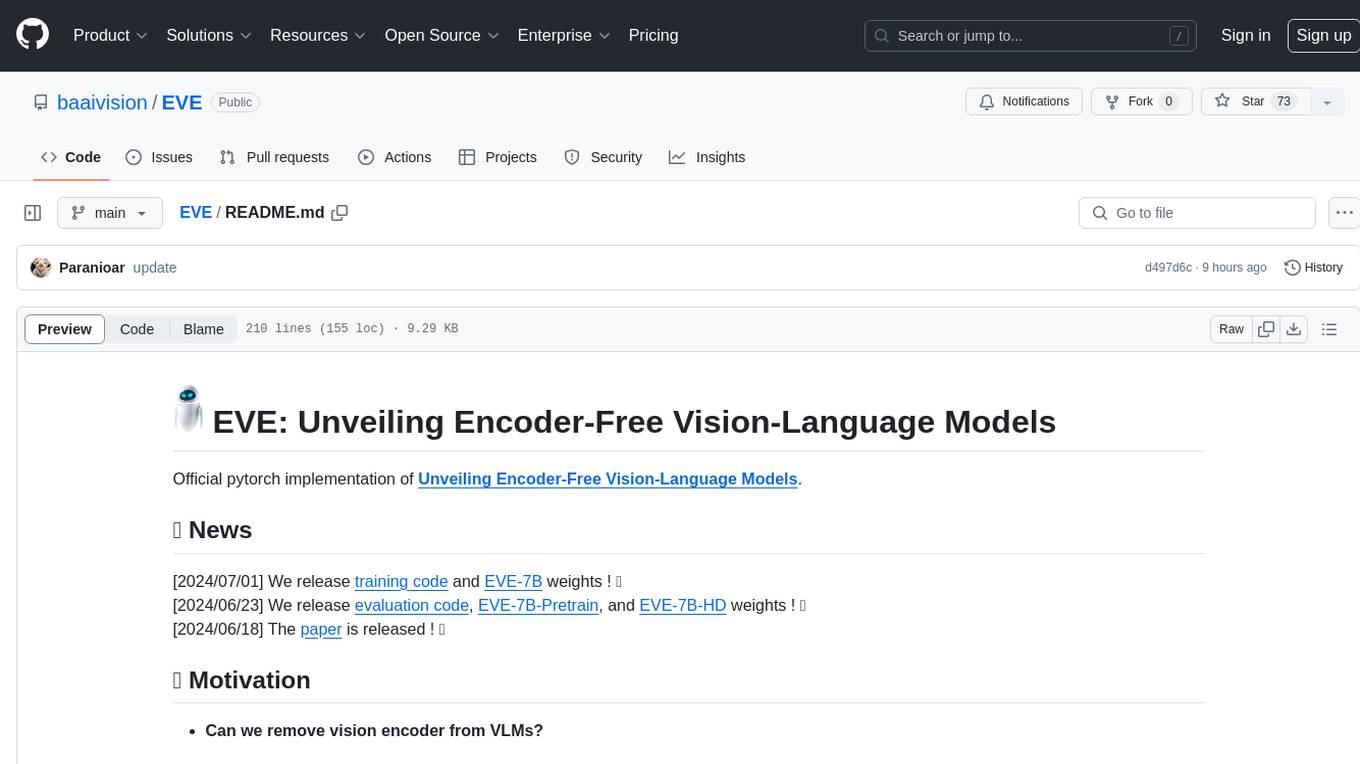
EVE is an official PyTorch implementation of Unveiling Encoder-Free Vision-Language Models. The project aims to explore the removal of vision encoders from Vision-Language Models (VLMs) and transfer LLMs to encoder-free VLMs efficiently. It also focuses on bridging the performance gap between encoder-free and encoder-based VLMs. EVE offers a superior capability with arbitrary image aspect ratio, data efficiency by utilizing publicly available data for pre-training, and training efficiency with a transparent and practical strategy for developing a pure decoder-only architecture across modalities.
README:
Official pytorch implementation of Unveiling Encoder-Free Vision-Language Models.
[2024/07/01] We release training code and EVE-7B weights ! 🚀
[2024/06/23] We release evaluation code, EVE-7B-Pretrain, and EVE-7B-HD weights ! 🚀
[2024/06/18] The paper is released ! 💥
-
Can we remove vision encoder from VLMs?
-
How to transfer an LLM to an encoder-free VLM efficiently and stably?
-
How to bridge the performance gap between encoder-free and encoder-based VLMs?
-
Authors: Haiwen Diao*, Yufeng Cui*, Xiaotong Li, Yueze Wang, Huchuan Lu📧, Xinlong Wang📧
-
Institutes: Dalian University of Technology; Beijing Academy of Artificial Intelligence; Peking University
-
Model Zoo: [🤗EVE-7B-Pretrain] [🤗EVE-7B] [🤗EVE-7B-HD]
-
🔥 Superior Capability: An originated encoder-free LVLM with arbitrary image aspect ratio, outperforming the counterpart Fuyu-8B and approaching existing modular encoder-based LVLMs.
-
🔥 Data Efficiency: Filter solely 33M publicly avaliable data from OpenImages, SAM, LAION for pre-training; Utilizing 665K LLaVA SFT data for EVE-7B, and extra 1.2M SFT data for EVE-7B (HD).
-
🔥 Training Efficiency: Trained with two 8-A100 (40G) nodes in ~9 days or four 8-A100 nodes in ~5 days
-
🔥 Pioneering Route: We attempt to provide an efficient, transparent, and practical training strategy and procedure for developing a pure decoder-only architecture across modalities.
The usage of EVE checkpoints should comply with the base LLM's model license: Llama 2.
| Model | LLM | Weight | VQAv2 | GQA | VizWiz | SQA_I | TextVQA | POPE | MME_P | MMBench | SEED/SEED_I | MM_Vet |
|---|---|---|---|---|---|---|---|---|---|---|---|---|
| EVE_7B_Pretrain | Vicuna_7B | HF_link | -- | -- | -- | -- | -- | -- | -- | -- | -- / -- | -- |
| EVE_7B | Vicuna_7B | HF_link | 75.4 | 60.8 | 41.8 | 63.0 | 51.9 | 83.6 | 1217.3 | 49.5 | 54.3 / 61.3 | 25.6 |
| EVE_7B_HD | Vicuna-7B | HF_link | 78.6 | 62.6 | 51.1 | 64.9 | 56.8 | 85.0 | 1305.7 | 52.3 | 56.8 / 64.6 | 25.7 |
- [ ] Involve more modalities into the unified EVE network.
- [ ] Full EVE series trained with more data, varied sizes, and better base models.
git clone https://github.com/baaivision/EVE.git
cd EVE
conda create -n eve_envs python=3.10 -y
conda activate eve_envs
pip install --upgrade pip
pip install -e .
pip install -e ".[train]"
pip install flash-attn --no-build-isolationDownload vicuna_model and extract them into lmsys/ path:
Download preprocessor and extract them into openai/ path:
lmsys
├── vicuna-7b-v1.5
│ │── config.json
│ │── ...
openai
├── clip-vit-large-patch14-336
│ │── config.json
│ │── ...
├── eve-patch14-anypixel-672
│ │── preprocessor_config.json
│ │── ...
├── eve-patch14-anypixel-1344
│ │── preprocessor_config.json
│ │── ...
from eve.model.builder import load_pretrained_model
from eve.mm_utils import get_model_name_from_path
from eve.eval.run_eve import eval_model
model_path = "Absolute Path of BAAI/EVE-7B-HD-v1.0"
tokenizer, model, image_processor, context_len = load_pretrained_model(
model_path=model_path,
model_base=None,
model_name=get_model_name_from_path(model_path)
)Check out the details wth the load_pretrained_model function in eve/model/builder.py.
You can also use eve/eval/eval_one_sample.py to get the output easily. By doing so, you can use this code on Colab directly after downloading this repository.
# run script
CUDA_VISIBLE_DEVICES=0 python eve/eval/eval_one_sample.pyYou can also build up your local demo using the following script:
# run script
python tools/app.pyYou should follow this instruction Data.md to manage the datasets. Currently, we provide direct download access to the web data. However, to avoid potential disputes, we plan to release URLs for these datasets rather than the raw data in the near future.
(1) LLM-guided Pre-aligning Stage: we only adopt 16M of 33M image-text data (EVE-cap16/33M) to train patch embedding and aligning layers. It really does count for efficient training, as it prevents collapse and accelerates convergence throughout the entire process.
| Model | Epoch | Batch_Size | Learning_Rate | LR_Schedule | Warmup_Ratio | Max_Length | Weight_decay | Optimizer | DeepSpeed |
|---|---|---|---|---|---|---|---|---|---|
| EVE_Prealign | 1 | 512 | 4e-4 | cosine decay | 0.03 | 2048 | 0 | AdamW | zero3 |
Training script for EVE_Prealign as follows:
bash scripts/eve/eve7b_prealign.sh ${node_rank} ${master_addr}(2) Generative Pre-training Stage: we use all 33M image-text pairs (EVE-cap33M) to train patch embedding and aligning layers, and the full LLM modules.
| Model | Epoch | Batch_Size | Learning_Rate | LR_Schedule | Warmup_Ratio | Max_Length | Weight_decay | Optimizer | DeepSpeed |
|---|---|---|---|---|---|---|---|---|---|
| EVE_Pretrain | 1 | 512 | 4e-5 | cosine decay | 0.01 | 2048 | 0 | AdamW | zero3 |
Training script for EVE_Pretrain as follows:
bash scripts/eve/eve7b_pretrain.sh ${node_rank} ${master_addr}(3) Supervised Fine-tuning Stage: We finetune the entire architecture with LLaVA-mix-665K for EVE-7B and extra 1.2M SFT conversation data for EVE-7B (HD).
| Model | Epoch | Batch_Size | Learning_Rate | LR_Schedule | Warmup_Ratio | Max_Length | Weight_decay | Optimizer | DeepSpeed |
|---|---|---|---|---|---|---|---|---|---|
| EVE_Finetune | 1 | 128 | 2e-5 | cosine decay | 0.01 | 2048/4096 | 0 | AdamW | zero3 |
Training scripts for EVE_7B and EVE_7B_HD as follows:
bash scripts/eve/eve7b_finetune.sh ${node_rank} ${master_addr}
bash scripts/eve/eve7b_finetune_hd.sh ${node_rank} ${master_addr}[NOTE]:
To train on fewer GPUs, you can reduce the per_device_train_batch_size and increase the gradient_accumulation_steps accordingly. Always keep the global batch size the same: per_device_train_batch_size x gradient_accumulation_steps x num_gpus.
To ensure the reproducibility, we evaluate the models with greedy decoding. We do not evaluate using beam search to make the inference process consistent with the chat demo of real-time outputs.
See Evaluation.md.
- LLaVA, ShareGPT: Thanks for their wonderful works and code!
- Vicuna: The amazing open-sourced large language model series!
If EVE is helpful for your research, please consider star ⭐ and citation 📝 :
@article{diao2024EVE,
title={Unveiling Encoder-Free Vision-Language Models},
author={Diao, Haiwen and Cui, Yufeng and Li, Xiaotong and Wang, Yueze and Lu, Huchuan and Wang, Xinlong},
journal={arXiv preprint arXiv:2406.11832},
year={2024}
}The content of this project itself is licensed under LICENSE.
For Tasks:
Click tags to check more tools for each tasksFor Jobs:
Alternative AI tools for EVE
Similar Open Source Tools

EVE
EVE is an official PyTorch implementation of Unveiling Encoder-Free Vision-Language Models. The project aims to explore the removal of vision encoders from Vision-Language Models (VLMs) and transfer LLMs to encoder-free VLMs efficiently. It also focuses on bridging the performance gap between encoder-free and encoder-based VLMs. EVE offers a superior capability with arbitrary image aspect ratio, data efficiency by utilizing publicly available data for pre-training, and training efficiency with a transparent and practical strategy for developing a pure decoder-only architecture across modalities.
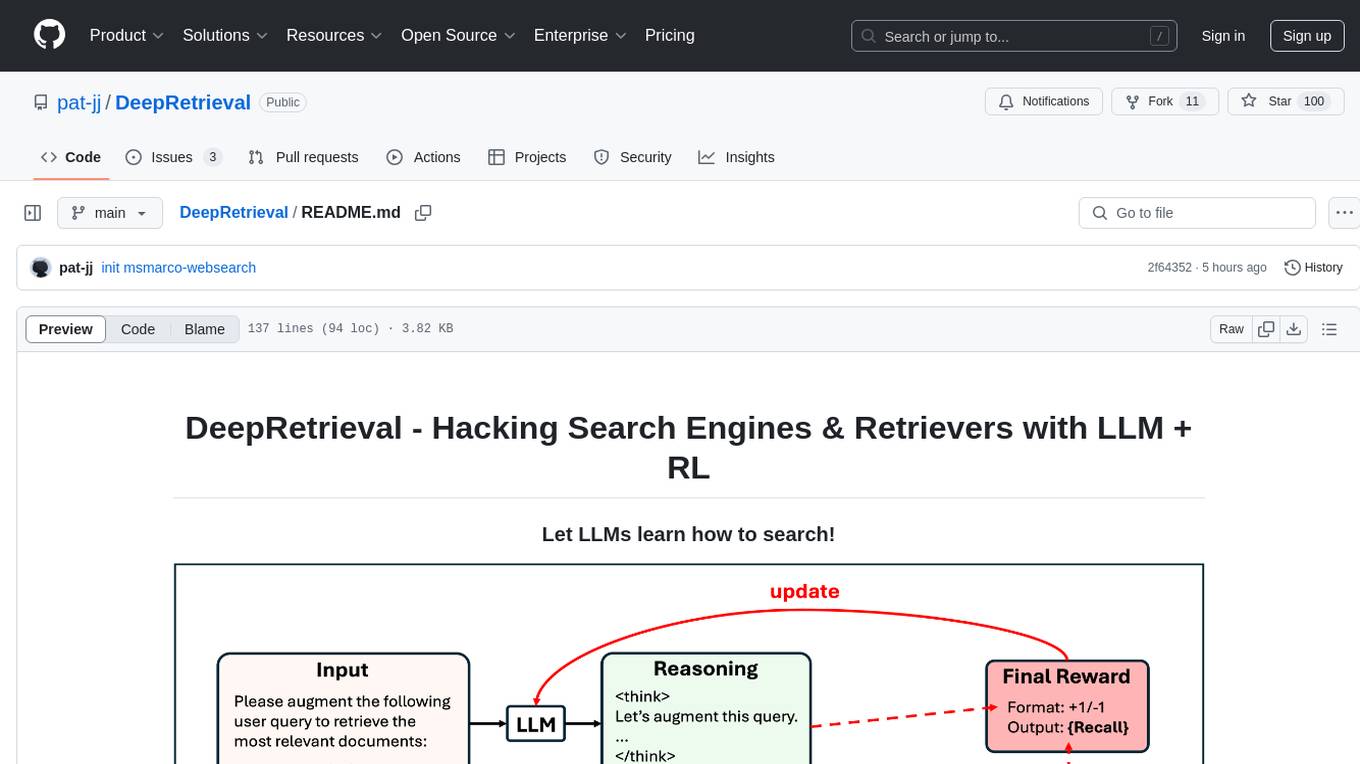
DeepRetrieval
DeepRetrieval is a tool designed to enhance search engines and retrievers using Large Language Models (LLMs) and Reinforcement Learning (RL). It allows LLMs to learn how to search effectively by integrating with search engine APIs and customizing reward functions. The tool provides functionalities for data preparation, training, evaluation, and monitoring search performance. DeepRetrieval aims to improve information retrieval tasks by leveraging advanced AI techniques.
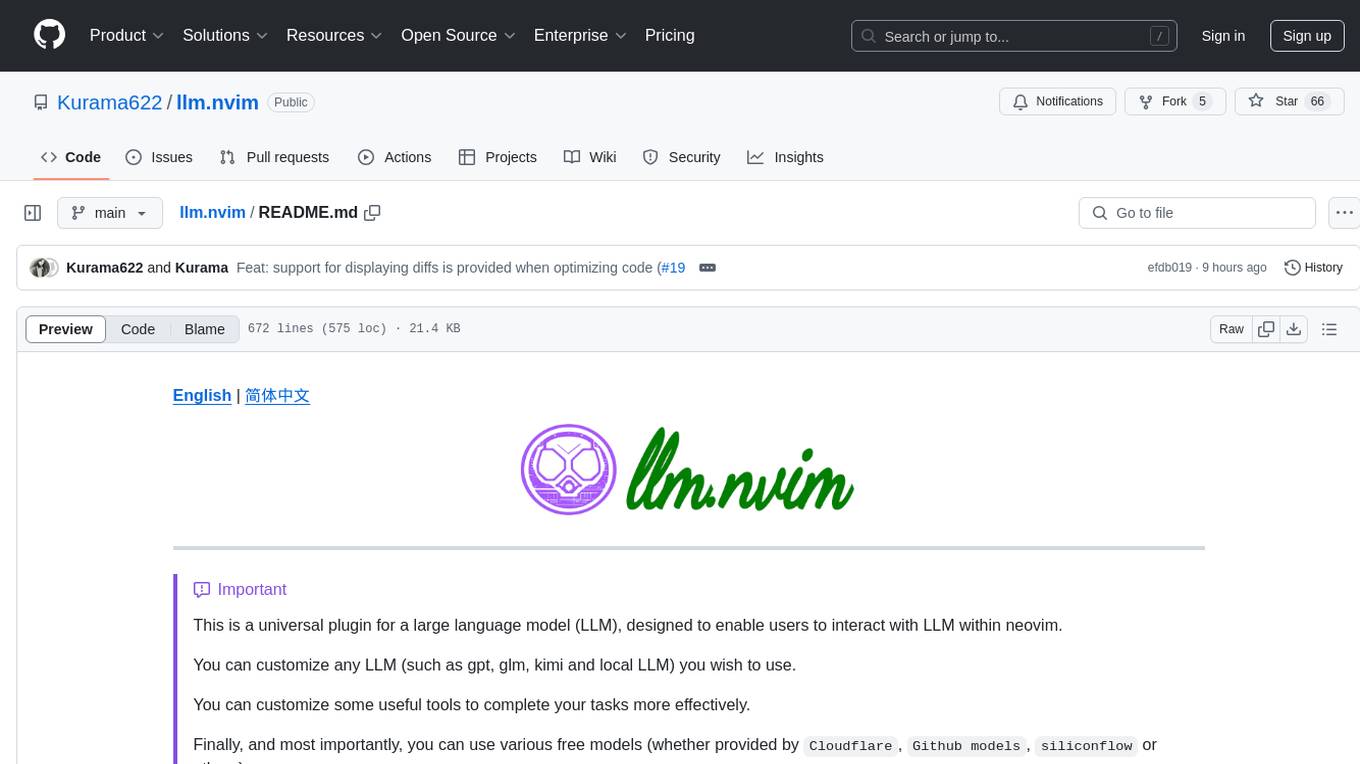
llm.nvim
llm.nvim is a universal plugin for a large language model (LLM) designed to enable users to interact with LLM within neovim. Users can customize various LLMs such as gpt, glm, kimi, and local LLM. The plugin provides tools for optimizing code, comparing code, translating text, and more. It also supports integration with free models from Cloudflare, Github models, siliconflow, and others. Users can customize tools, chat with LLM, quickly translate text, and explain code snippets. The plugin offers a flexible window interface for easy interaction and customization.
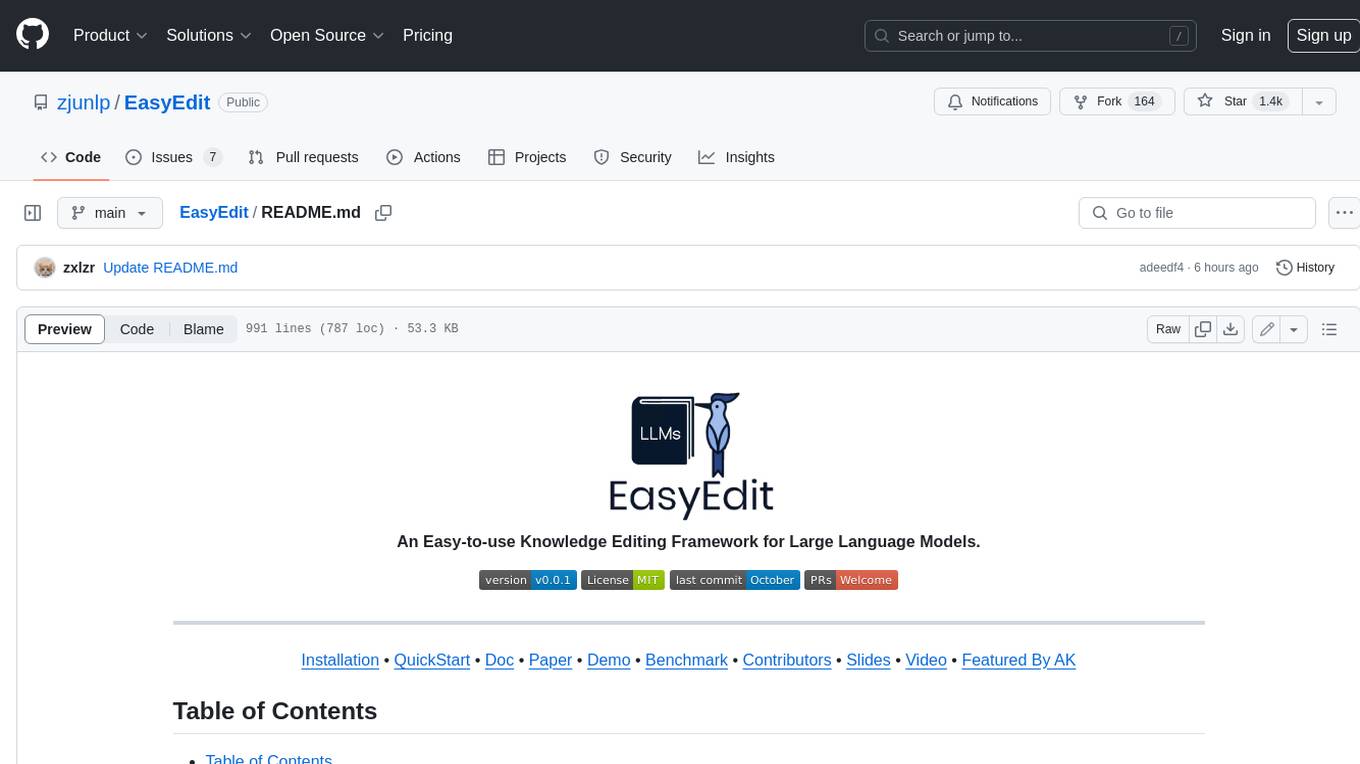
EasyEdit
EasyEdit is a Python package for edit Large Language Models (LLM) like `GPT-J`, `Llama`, `GPT-NEO`, `GPT2`, `T5`(support models from **1B** to **65B**), the objective of which is to alter the behavior of LLMs efficiently within a specific domain without negatively impacting performance across other inputs. It is designed to be easy to use and easy to extend.
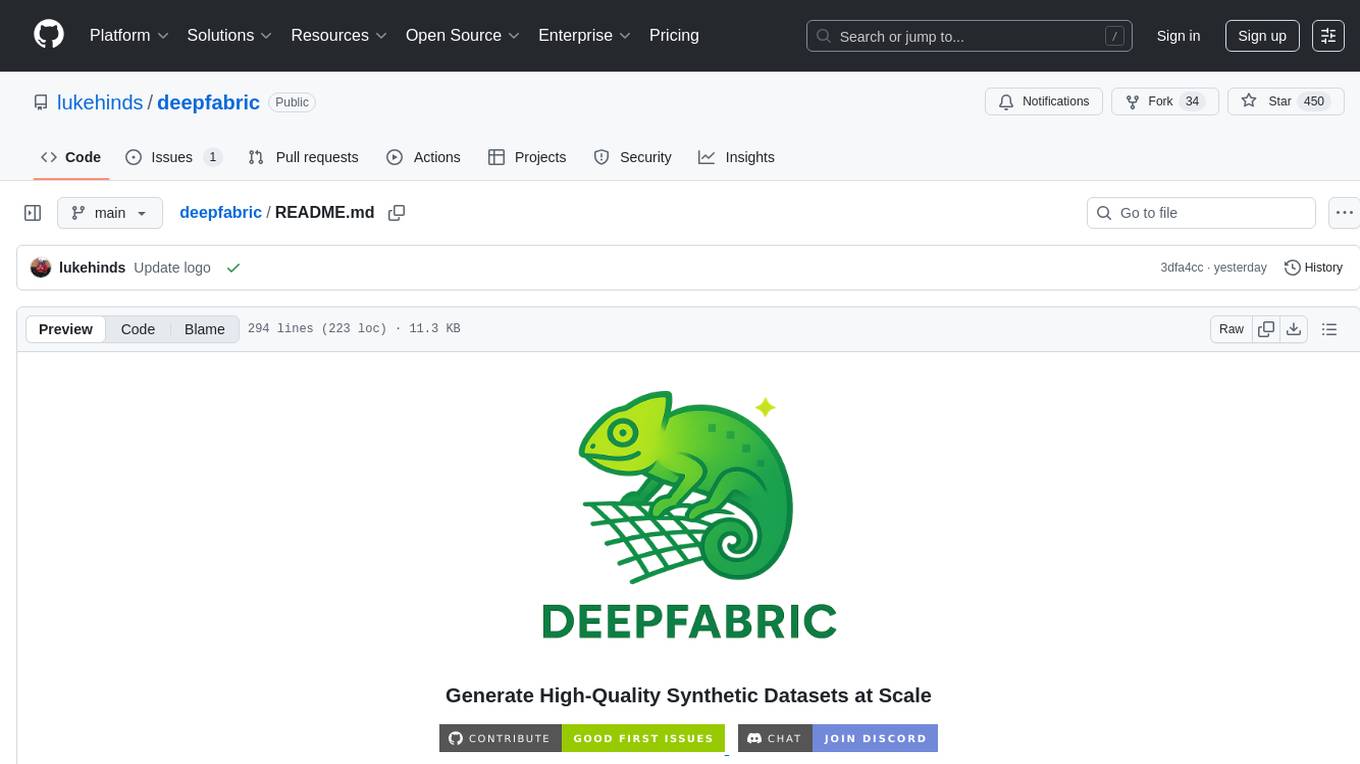
deepfabric
DeepFabric is a CLI tool and SDK designed for researchers and developers to generate high-quality synthetic datasets at scale using large language models. It leverages a graph and tree-based architecture to create diverse and domain-specific datasets while minimizing redundancy. The tool supports generating Chain of Thought datasets for step-by-step reasoning tasks and offers multi-provider support for using different language models. DeepFabric also allows for automatic dataset upload to Hugging Face Hub and uses YAML configuration files for flexibility in dataset generation.

hcaptcha-challenger
hCaptcha Challenger is a tool designed to gracefully face hCaptcha challenges using a multimodal large language model. It does not rely on Tampermonkey scripts or third-party anti-captcha services, instead implementing interfaces for 'AI vs AI' scenarios. The tool supports various challenge types such as image labeling, drag and drop, and advanced tasks like self-supervised challenges and Agentic Workflow. Users can access documentation in multiple languages and leverage resources for tasks like model training, dataset annotation, and model upgrading. The tool aims to enhance user experience in handling hCaptcha challenges with innovative AI capabilities.
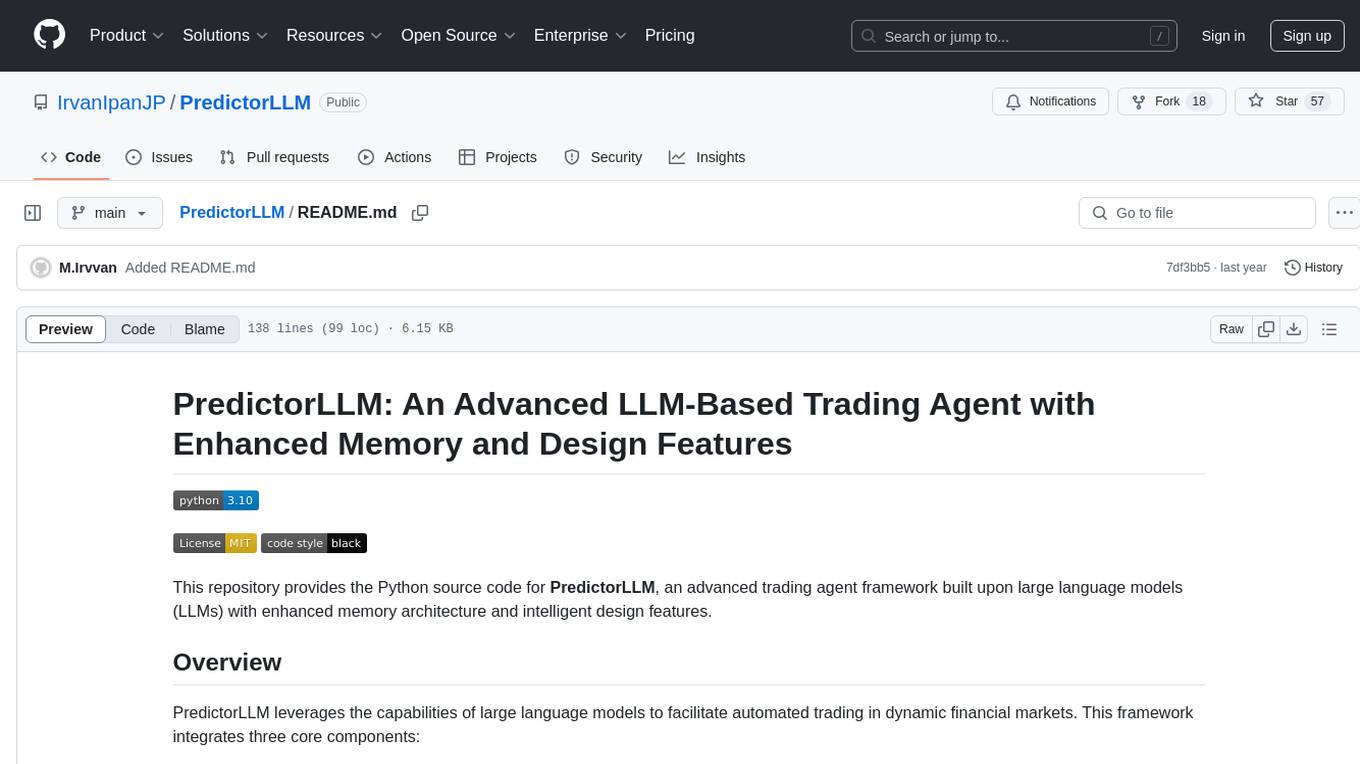
PredictorLLM
PredictorLLM is an advanced trading agent framework that utilizes large language models to automate trading in financial markets. It includes a profiling module to establish agent characteristics, a layered memory module for retaining and prioritizing financial data, and a decision-making module to convert insights into trading strategies. The framework mimics professional traders' behavior, surpassing human limitations in data processing and continuously evolving to adapt to market conditions for superior investment outcomes.
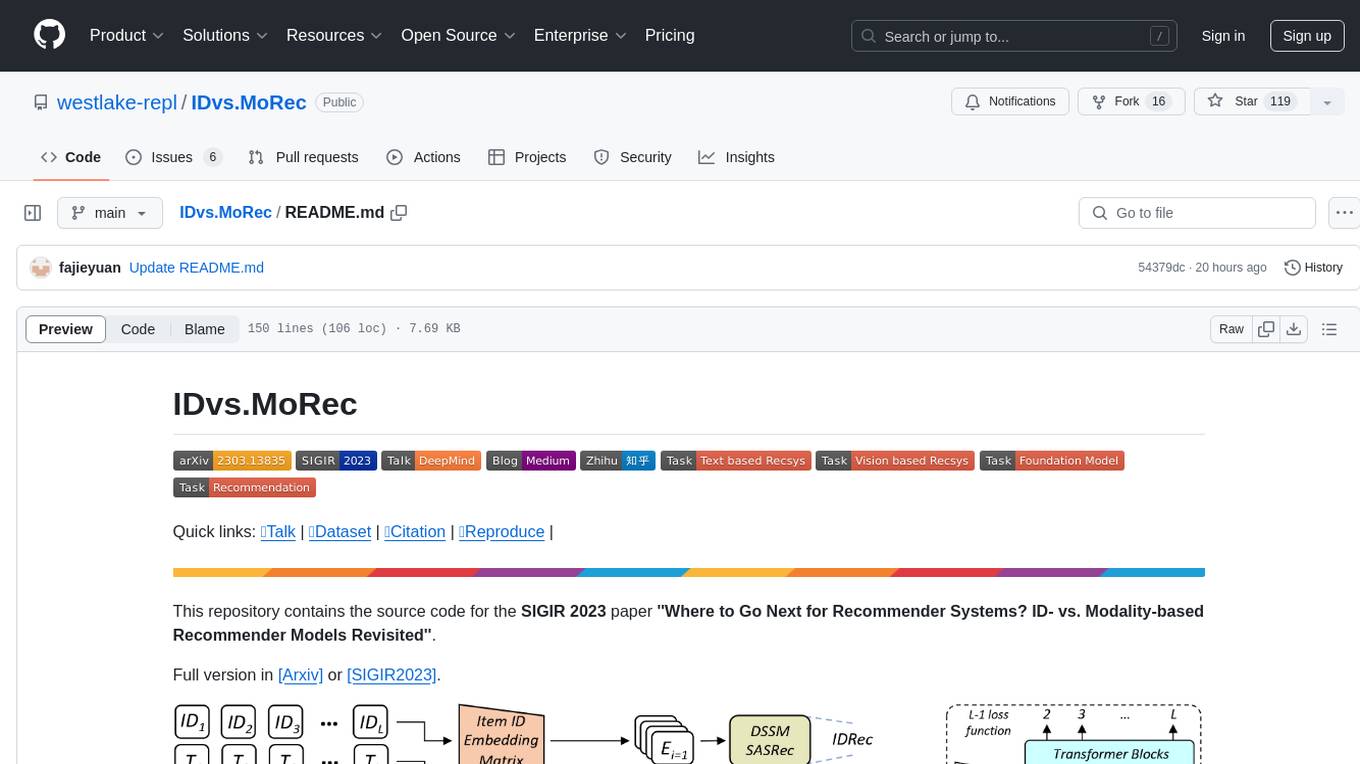
IDvs.MoRec
This repository contains the source code for the SIGIR 2023 paper 'Where to Go Next for Recommender Systems? ID- vs. Modality-based Recommender Models Revisited'. It provides resources for evaluating foundation, transferable, multi-modal, and LLM recommendation models, along with datasets, pre-trained models, and training strategies for IDRec and MoRec using in-batch debiased cross-entropy loss. The repository also offers large-scale datasets, code for SASRec with in-batch debias cross-entropy loss, and information on joining the lab for research opportunities.
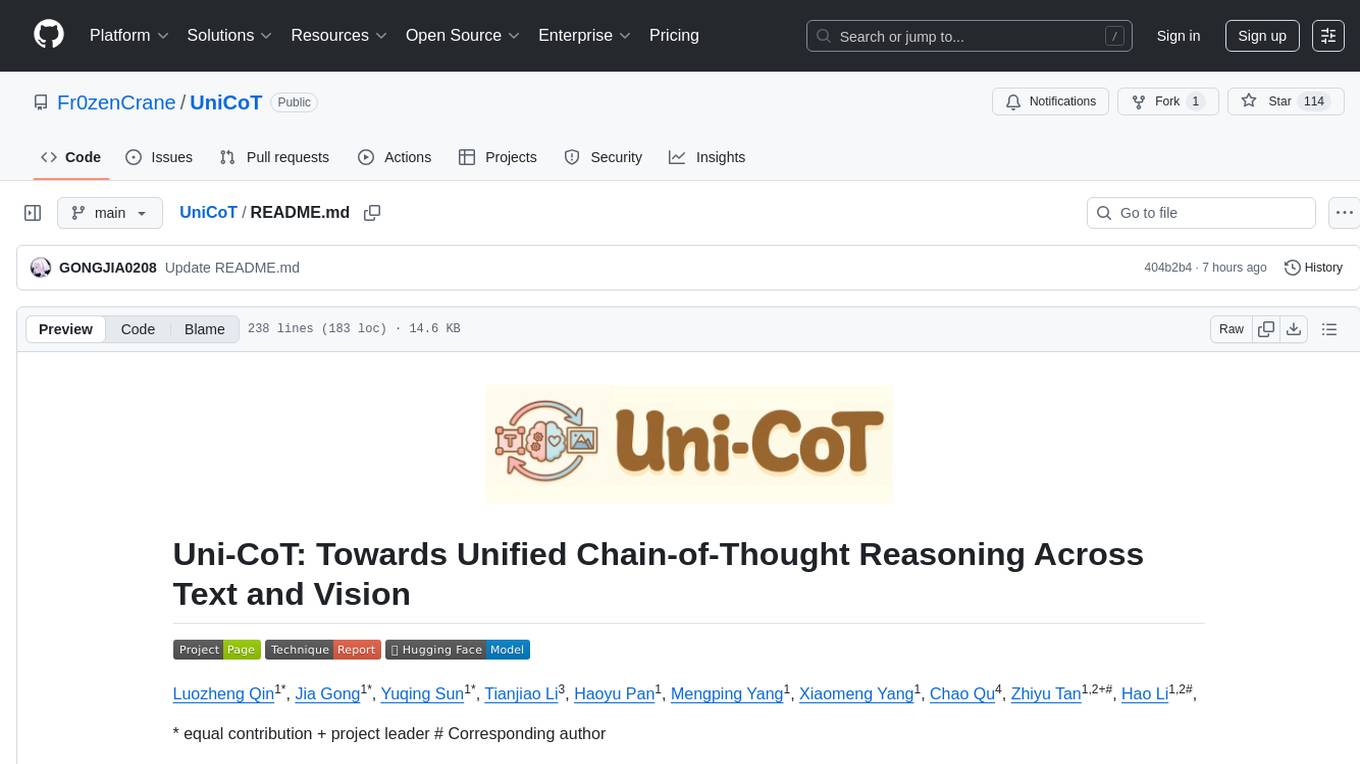
UniCoT
Uni-CoT is a unified reasoning framework that extends Chain-of-Thought (CoT) principles to the multimodal domain, enabling Multimodal Large Language Models (MLLMs) to perform interpretable, step-by-step reasoning across both text and vision. It decomposes complex multimodal tasks into structured, manageable steps that can be executed sequentially or in parallel, allowing for more scalable and systematic reasoning.
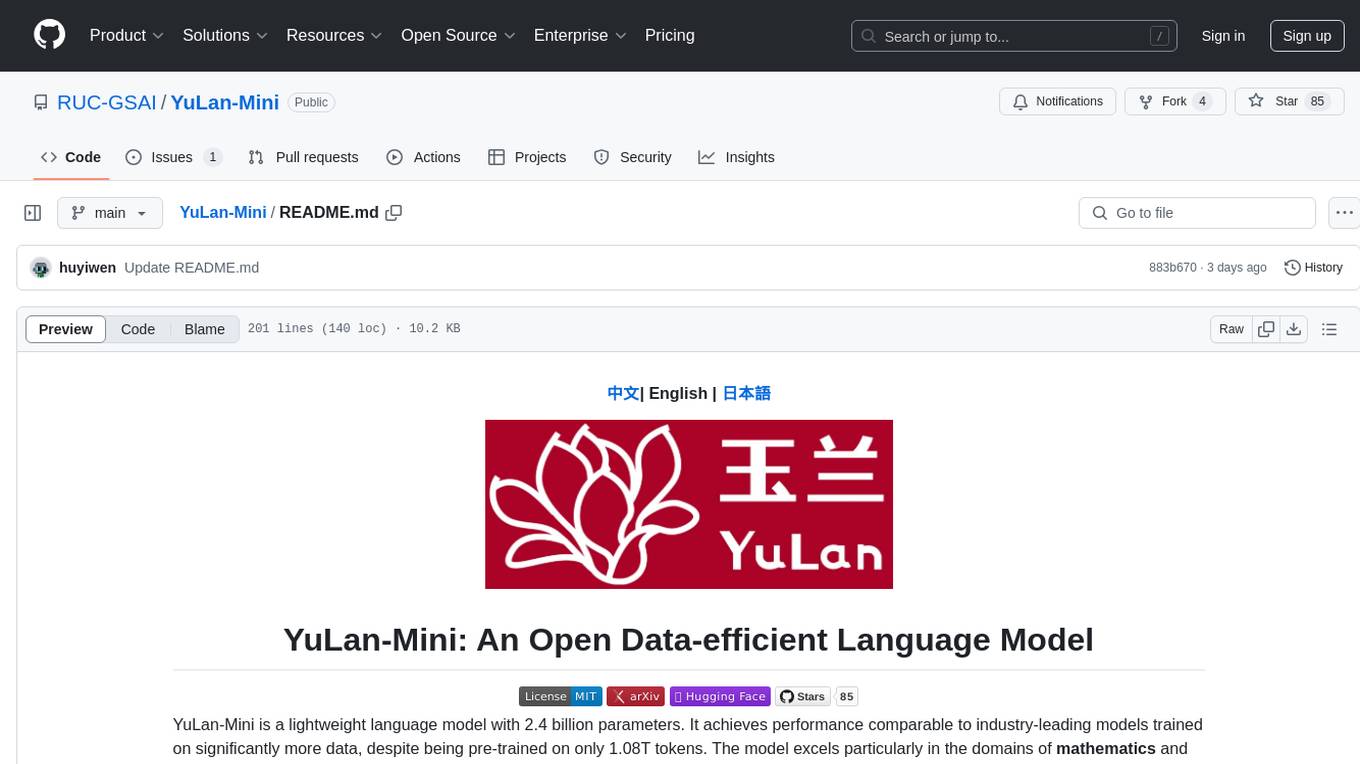
YuLan-Mini
YuLan-Mini is a lightweight language model with 2.4 billion parameters that achieves performance comparable to industry-leading models despite being pre-trained on only 1.08T tokens. It excels in mathematics and code domains. The repository provides pre-training resources, including data pipeline, optimization methods, and annealing approaches. Users can pre-train their own language models, perform learning rate annealing, fine-tune the model, research training dynamics, and synthesize data. The team behind YuLan-Mini is AI Box at Renmin University of China. The code is released under the MIT License with future updates on model weights usage policies. Users are advised on potential safety concerns and ethical use of the model.
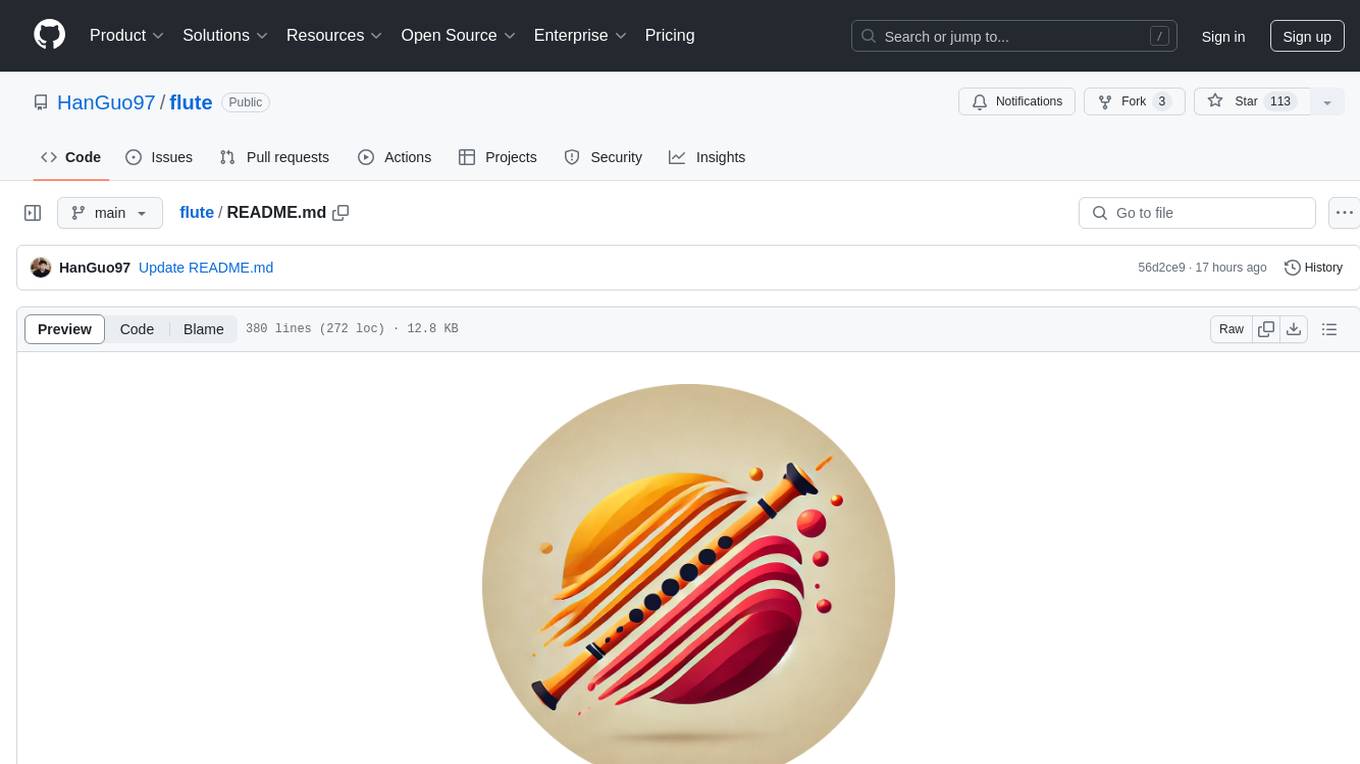
flute
FLUTE (Flexible Lookup Table Engine for LUT-quantized LLMs) is a tool designed for uniform quantization and lookup table quantization of weights in lower-precision intervals. It offers flexibility in mapping intervals to arbitrary values through a lookup table. FLUTE supports various quantization formats such as int4, int3, int2, fp4, fp3, fp2, nf4, nf3, nf2, and even custom tables. The tool also introduces new quantization algorithms like Learned Normal Float (NFL) for improved performance and calibration data learning. FLUTE provides benchmarks, model zoo, and integration with frameworks like vLLM and HuggingFace for easy deployment and usage.
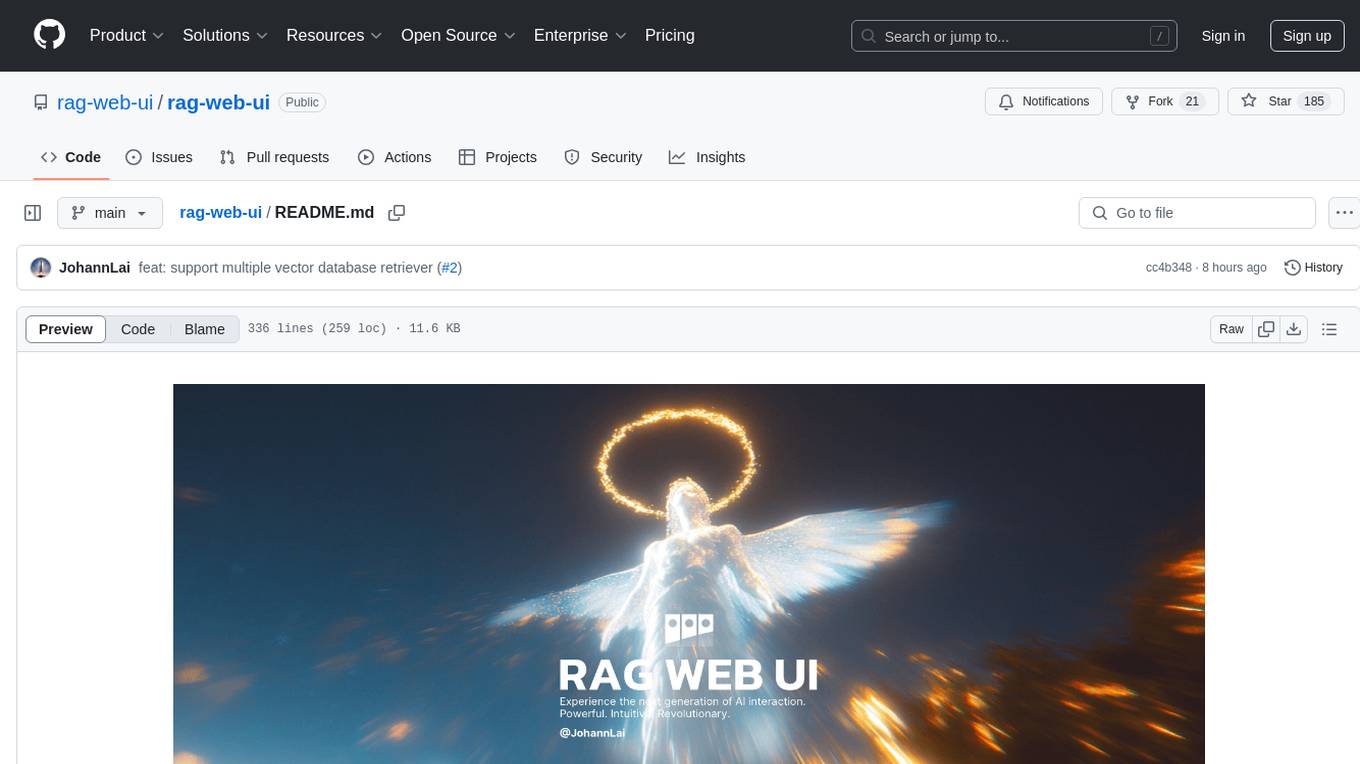
rag-web-ui
RAG Web UI is an intelligent dialogue system based on RAG (Retrieval-Augmented Generation) technology. It helps enterprises and individuals build intelligent Q&A systems based on their own knowledge bases. By combining document retrieval and large language models, it delivers accurate and reliable knowledge-based question-answering services. The system is designed with features like intelligent document management, advanced dialogue engine, and a robust architecture. It supports multiple document formats, async document processing, multi-turn contextual dialogue, and reference citations in conversations. The architecture includes a backend stack with Python FastAPI, MySQL + ChromaDB, MinIO, Langchain, JWT + OAuth2 for authentication, and a frontend stack with Next.js, TypeScript, Tailwind CSS, Shadcn/UI, and Vercel AI SDK for AI integration. Performance optimization includes incremental document processing, streaming responses, vector database performance tuning, and distributed task processing. The project is licensed under the Apache-2.0 License and is intended for learning and sharing RAG knowledge only, not for commercial purposes.
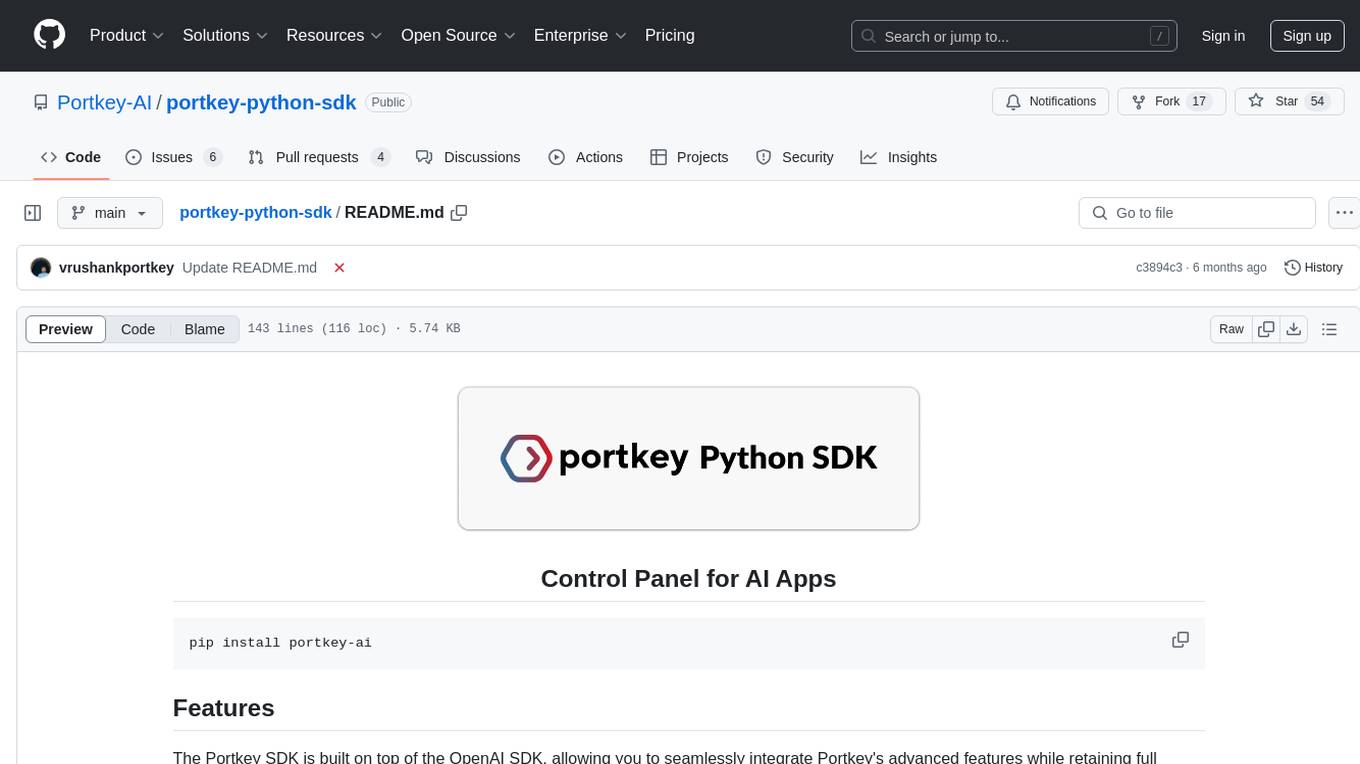
portkey-python-sdk
The Portkey Python SDK is a control panel for AI apps that allows seamless integration of Portkey's advanced features with OpenAI methods. It provides features such as AI gateway for unified API signature, interoperability, automated fallbacks & retries, load balancing, semantic caching, virtual keys, request timeouts, observability with logging, requests tracing, custom metadata, feedback collection, and analytics. Users can make requests to OpenAI using Portkey SDK and also use async functionality. The SDK is compatible with OpenAI SDK methods and offers Portkey-specific methods like feedback and prompts. It supports various providers and encourages contributions through Github issues or direct contact via email or Discord.
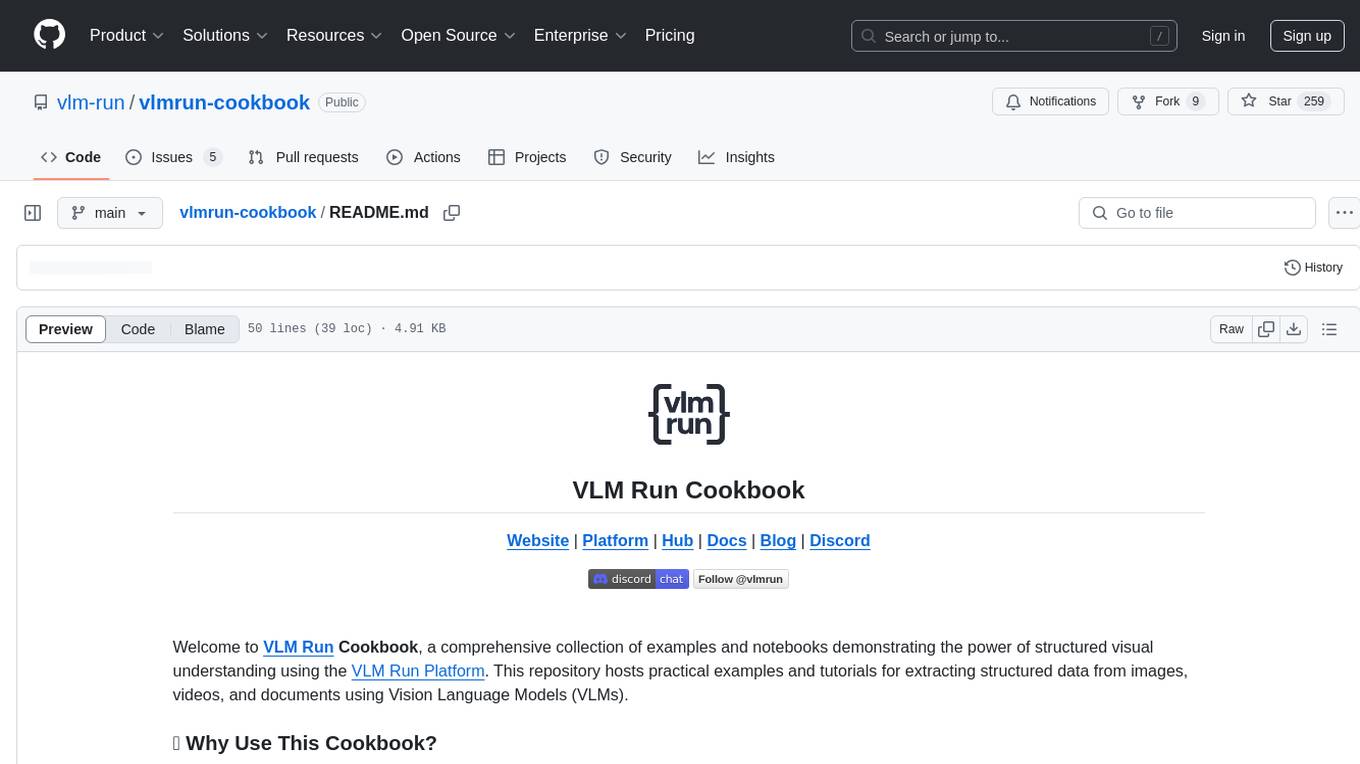
vlmrun-cookbook
VLM Run Cookbook is a repository containing practical examples and tutorials for extracting structured data from images, videos, and documents using Vision Language Models (VLMs). It offers comprehensive Colab notebooks demonstrating real-world applications of VLM Run, with complete code and documentation for easy adaptation. The examples cover various domains such as financial documents and TV news analysis.
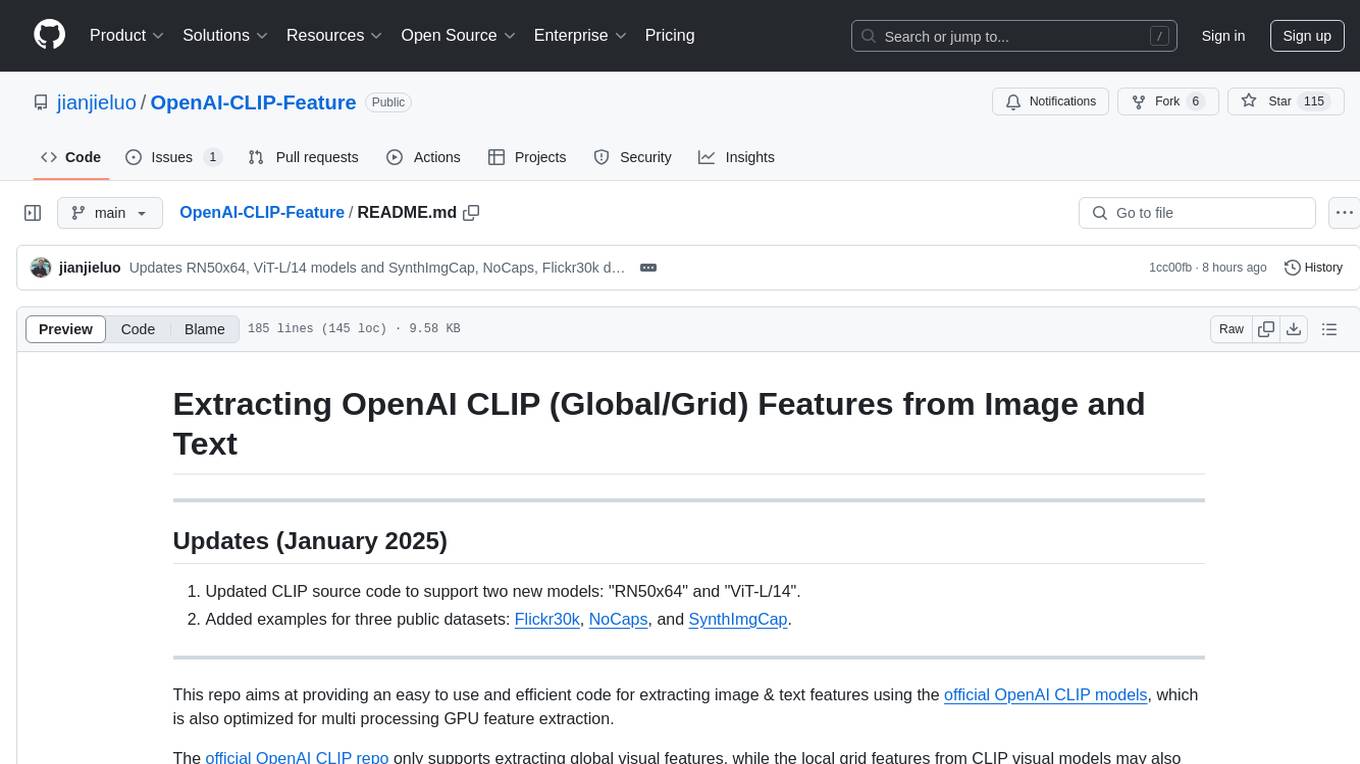
OpenAI-CLIP-Feature
This repository provides code for extracting image and text features using OpenAI CLIP models, supporting both global and local grid visual features. It aims to facilitate multi visual-and-language downstream tasks by allowing users to customize input and output grid resolution easily. The extracted features have shown comparable or superior results in image captioning tasks without hyperparameter tuning. The repo supports various CLIP models and provides detailed information on supported settings and results on MSCOCO image captioning. Users can get started by setting up experiments with the extracted features using X-modaler.
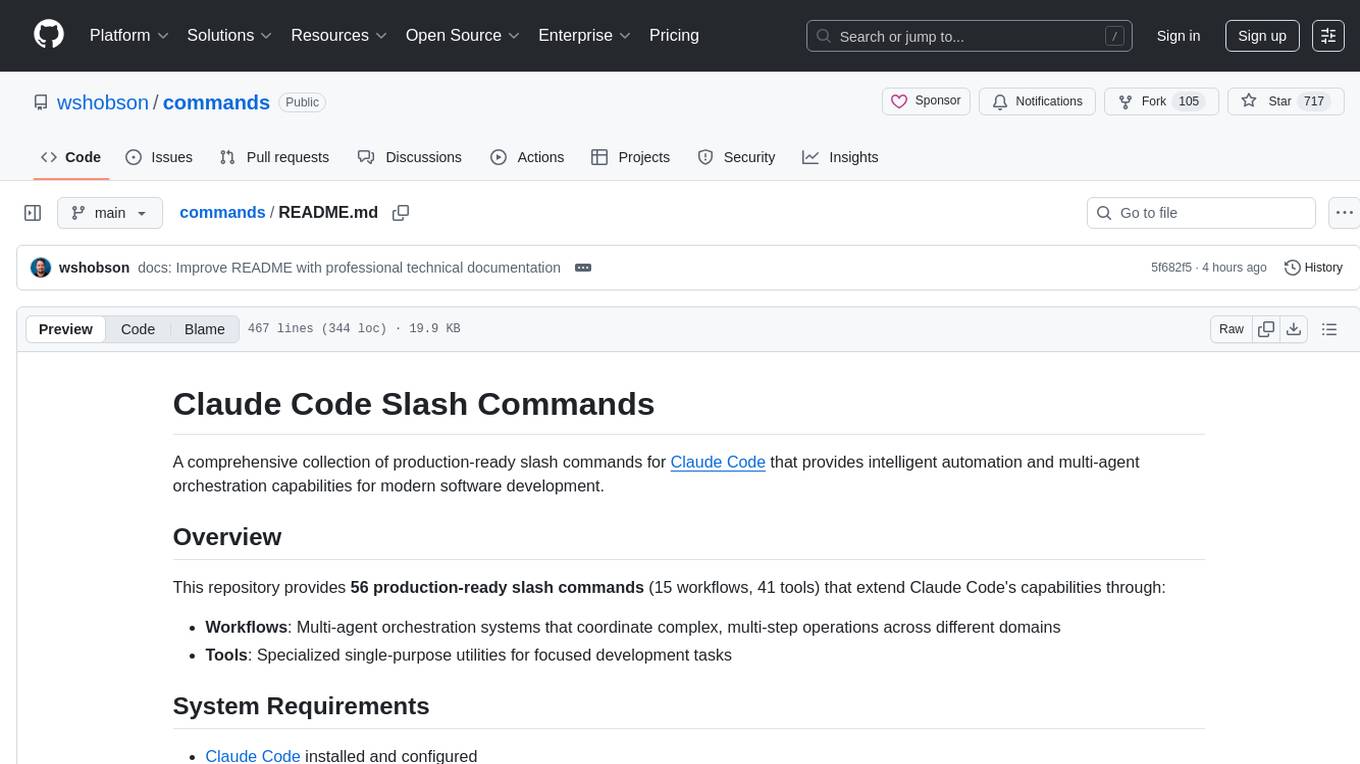
commands
Production-ready slash commands for Claude Code that accelerate development through intelligent automation and multi-agent orchestration. Contains 52 commands organized into workflows and tools categories. Workflows orchestrate complex tasks with multiple agents, while tools provide focused functionality for specific development tasks. Commands can be used with prefixes for organization or flattened for convenience. Best practices include using workflows for complex tasks and tools for specific scopes, chaining commands strategically, and providing detailed context for effective usage.
For similar tasks
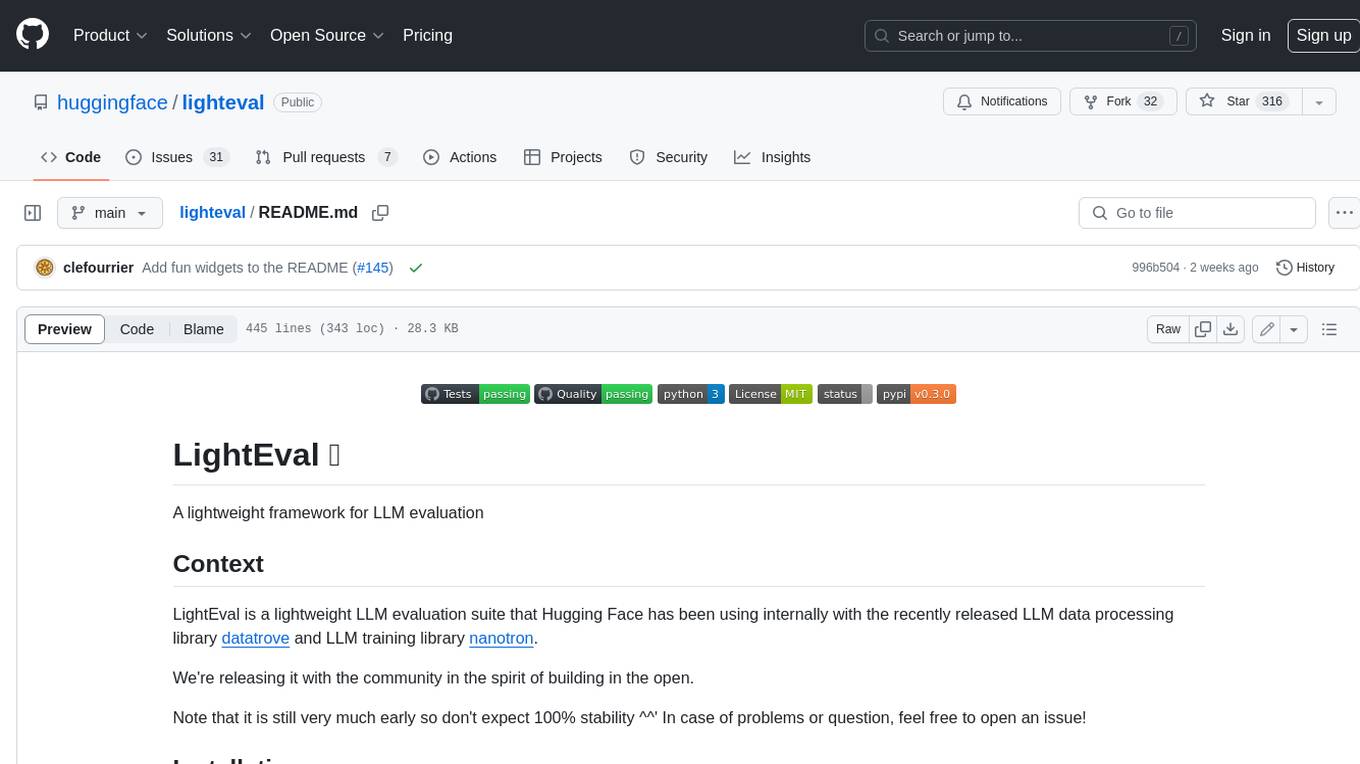
lighteval
LightEval is a lightweight LLM evaluation suite that Hugging Face has been using internally with the recently released LLM data processing library datatrove and LLM training library nanotron. We're releasing it with the community in the spirit of building in the open. Note that it is still very much early so don't expect 100% stability ^^' In case of problems or question, feel free to open an issue!
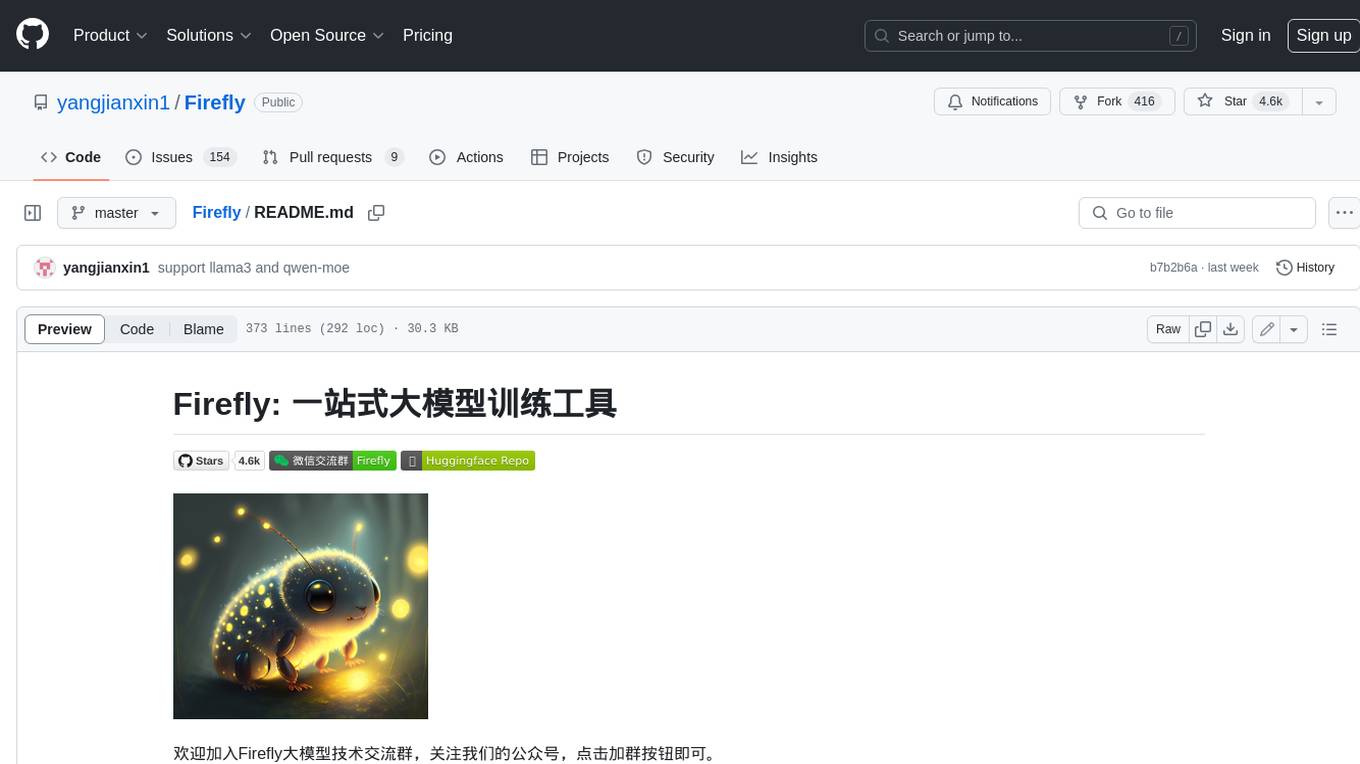
Firefly
Firefly is an open-source large model training project that supports pre-training, fine-tuning, and DPO of mainstream large models. It includes models like Llama3, Gemma, Qwen1.5, MiniCPM, Llama, InternLM, Baichuan, ChatGLM, Yi, Deepseek, Qwen, Orion, Ziya, Xverse, Mistral, Mixtral-8x7B, Zephyr, Vicuna, Bloom, etc. The project supports full-parameter training, LoRA, QLoRA efficient training, and various tasks such as pre-training, SFT, and DPO. Suitable for users with limited training resources, QLoRA is recommended for fine-tuning instructions. The project has achieved good results on the Open LLM Leaderboard with QLoRA training process validation. The latest version has significant updates and adaptations for different chat model templates.
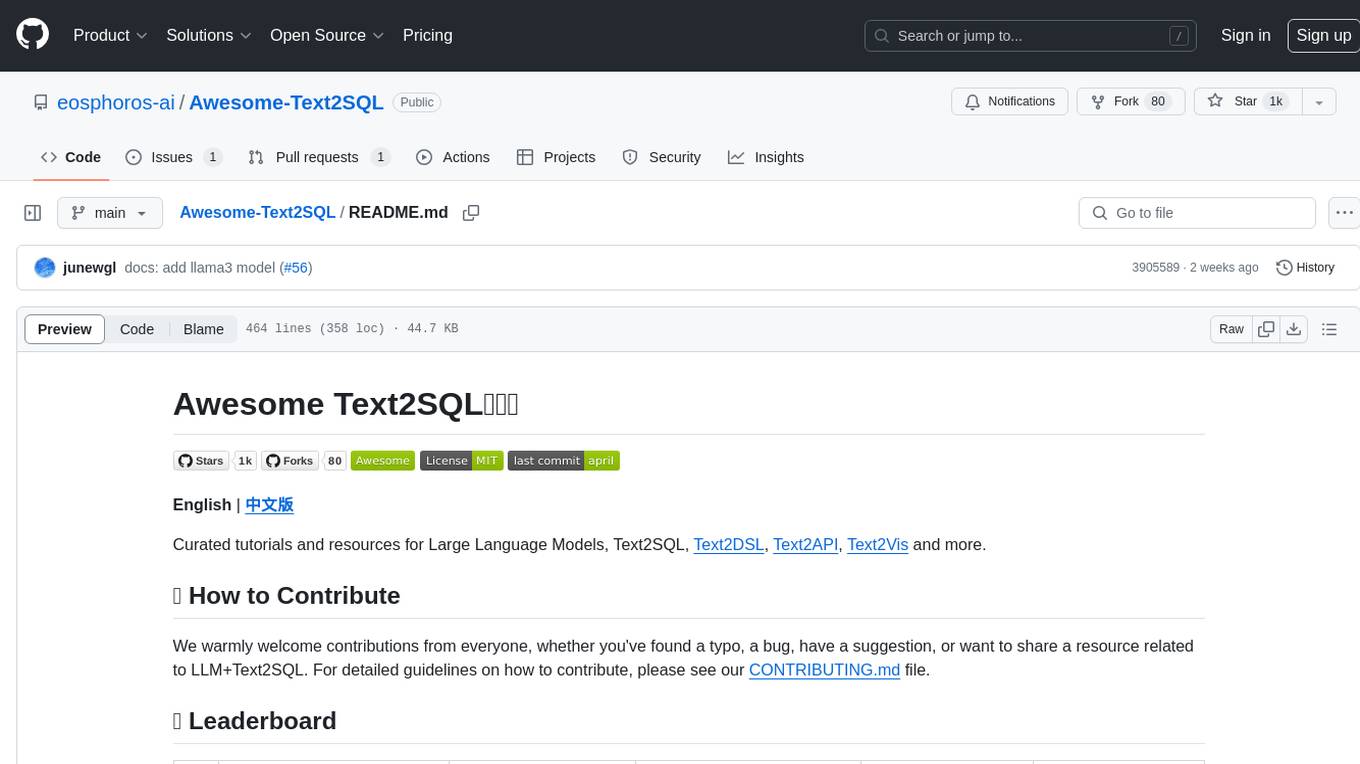
Awesome-Text2SQL
Awesome Text2SQL is a curated repository containing tutorials and resources for Large Language Models, Text2SQL, Text2DSL, Text2API, Text2Vis, and more. It provides guidelines on converting natural language questions into structured SQL queries, with a focus on NL2SQL. The repository includes information on various models, datasets, evaluation metrics, fine-tuning methods, libraries, and practice projects related to Text2SQL. It serves as a comprehensive resource for individuals interested in working with Text2SQL and related technologies.
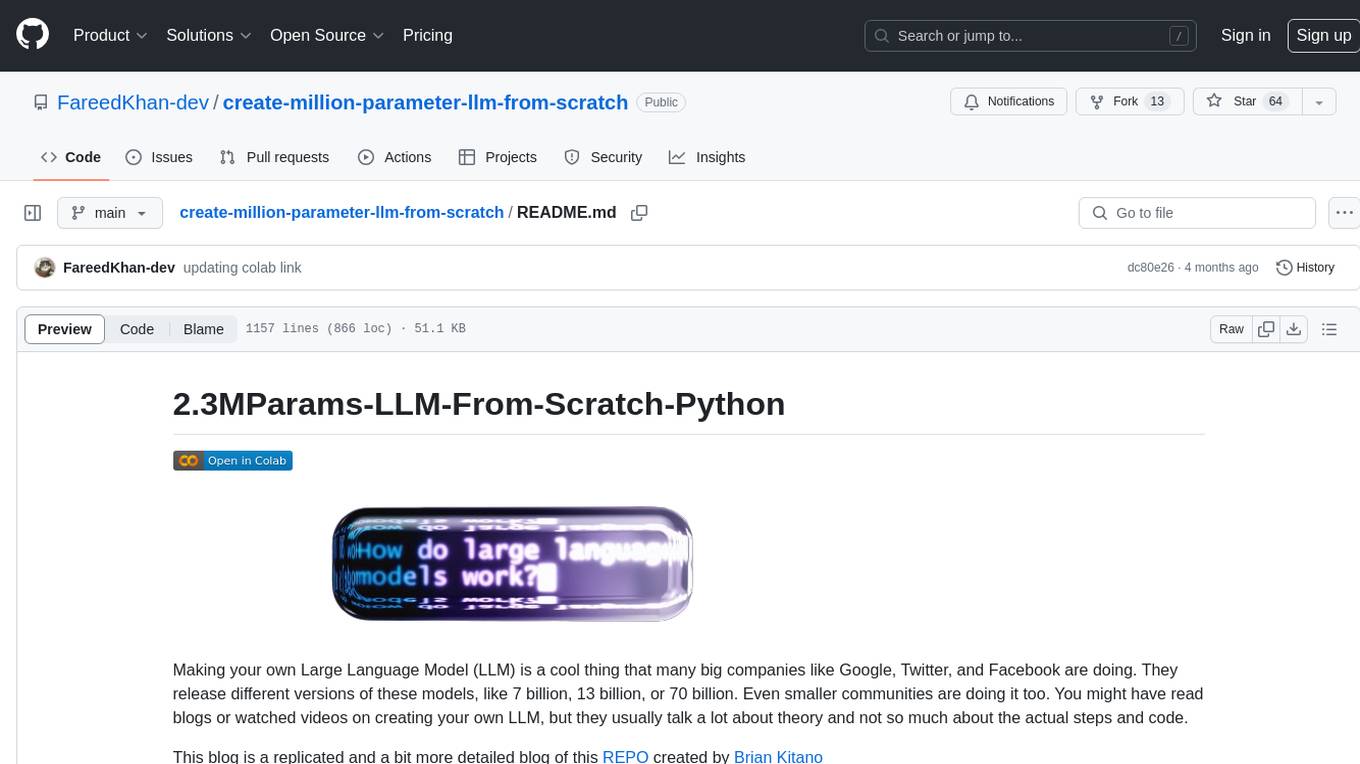
create-million-parameter-llm-from-scratch
The 'create-million-parameter-llm-from-scratch' repository provides a detailed guide on creating a Large Language Model (LLM) with 2.3 million parameters from scratch. The blog replicates the LLaMA approach, incorporating concepts like RMSNorm for pre-normalization, SwiGLU activation function, and Rotary Embeddings. The model is trained on a basic dataset to demonstrate the ease of creating a million-parameter LLM without the need for a high-end GPU.
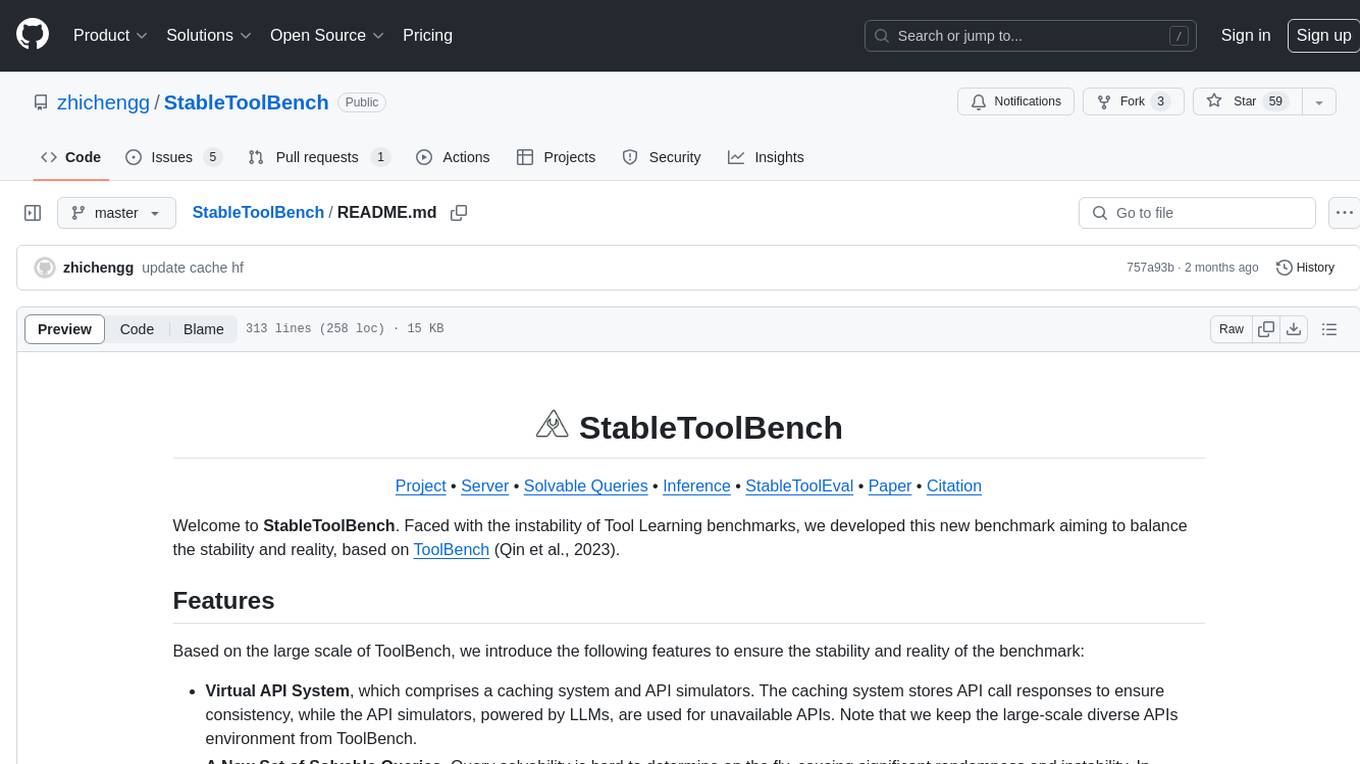
StableToolBench
StableToolBench is a new benchmark developed to address the instability of Tool Learning benchmarks. It aims to balance stability and reality by introducing features such as a Virtual API System with caching and API simulators, a new set of solvable queries determined by LLMs, and a Stable Evaluation System using GPT-4. The Virtual API Server can be set up either by building from source or using a prebuilt Docker image. Users can test the server using provided scripts and evaluate models with Solvable Pass Rate and Solvable Win Rate metrics. The tool also includes model experiments results comparing different models' performance.
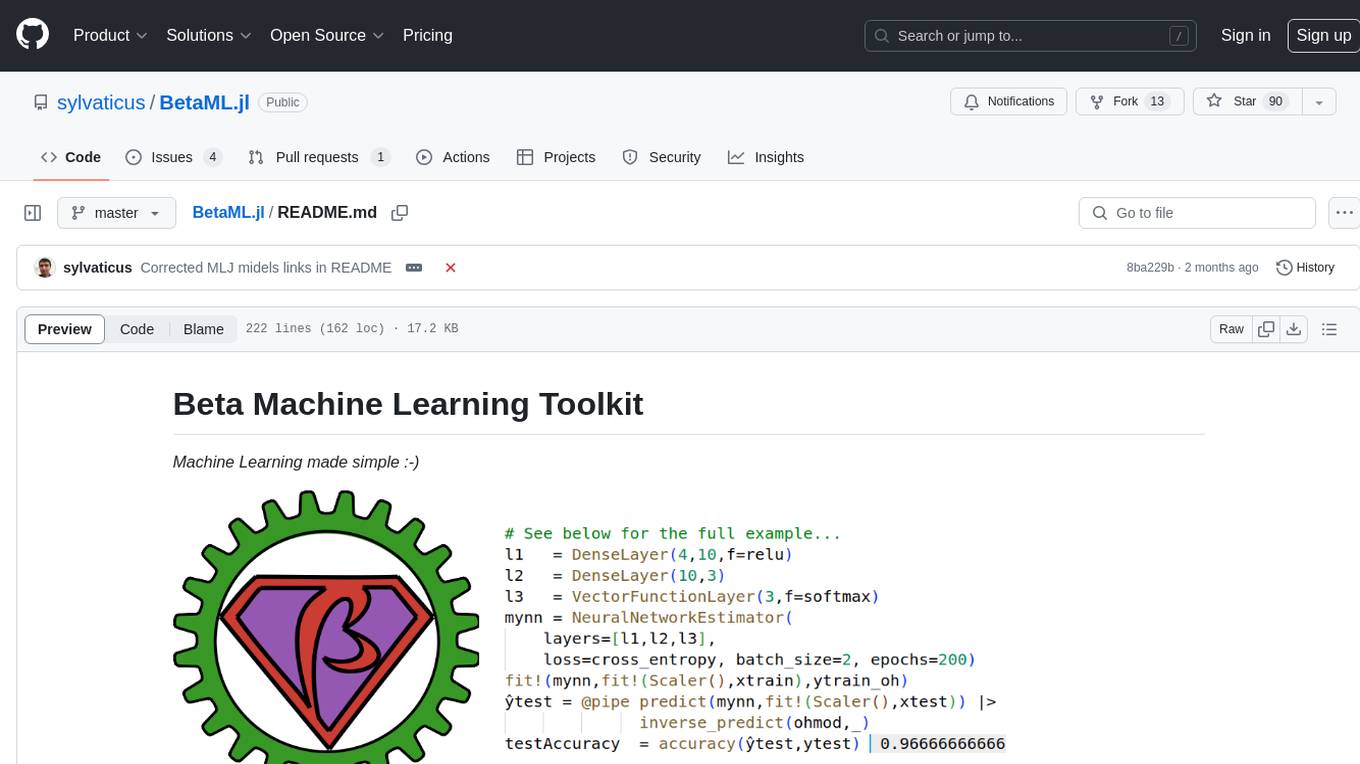
BetaML.jl
The Beta Machine Learning Toolkit is a package containing various algorithms and utilities for implementing machine learning workflows in multiple languages, including Julia, Python, and R. It offers a range of supervised and unsupervised models, data transformers, and assessment tools. The models are implemented entirely in Julia and are not wrappers for third-party models. Users can easily contribute new models or request implementations. The focus is on user-friendliness rather than computational efficiency, making it suitable for educational and research purposes.
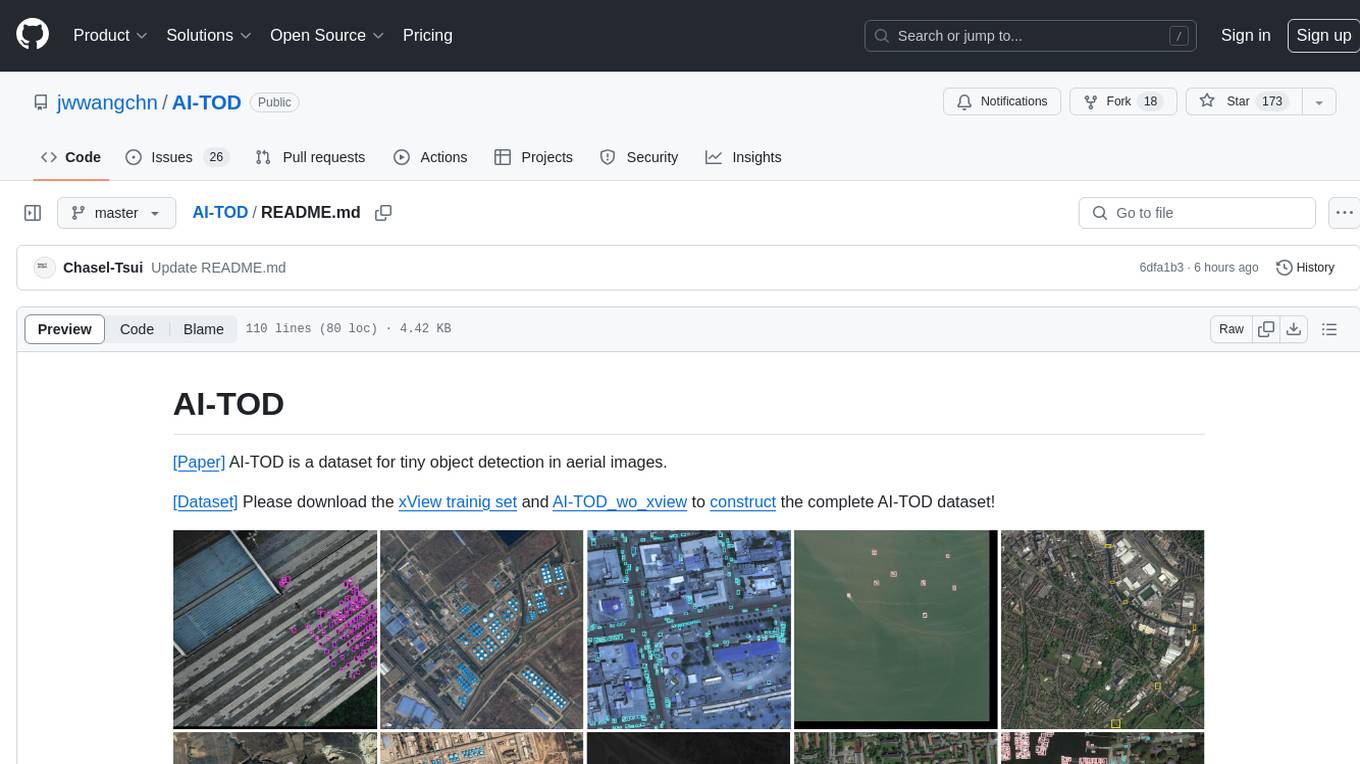
AI-TOD
AI-TOD is a dataset for tiny object detection in aerial images, containing 700,621 object instances across 28,036 images. Objects in AI-TOD are smaller with a mean size of 12.8 pixels compared to other aerial image datasets. To use AI-TOD, download xView training set and AI-TOD_wo_xview, then generate the complete dataset using the provided synthesis tool. The dataset is publicly available for academic and research purposes under CC BY-NC-SA 4.0 license.
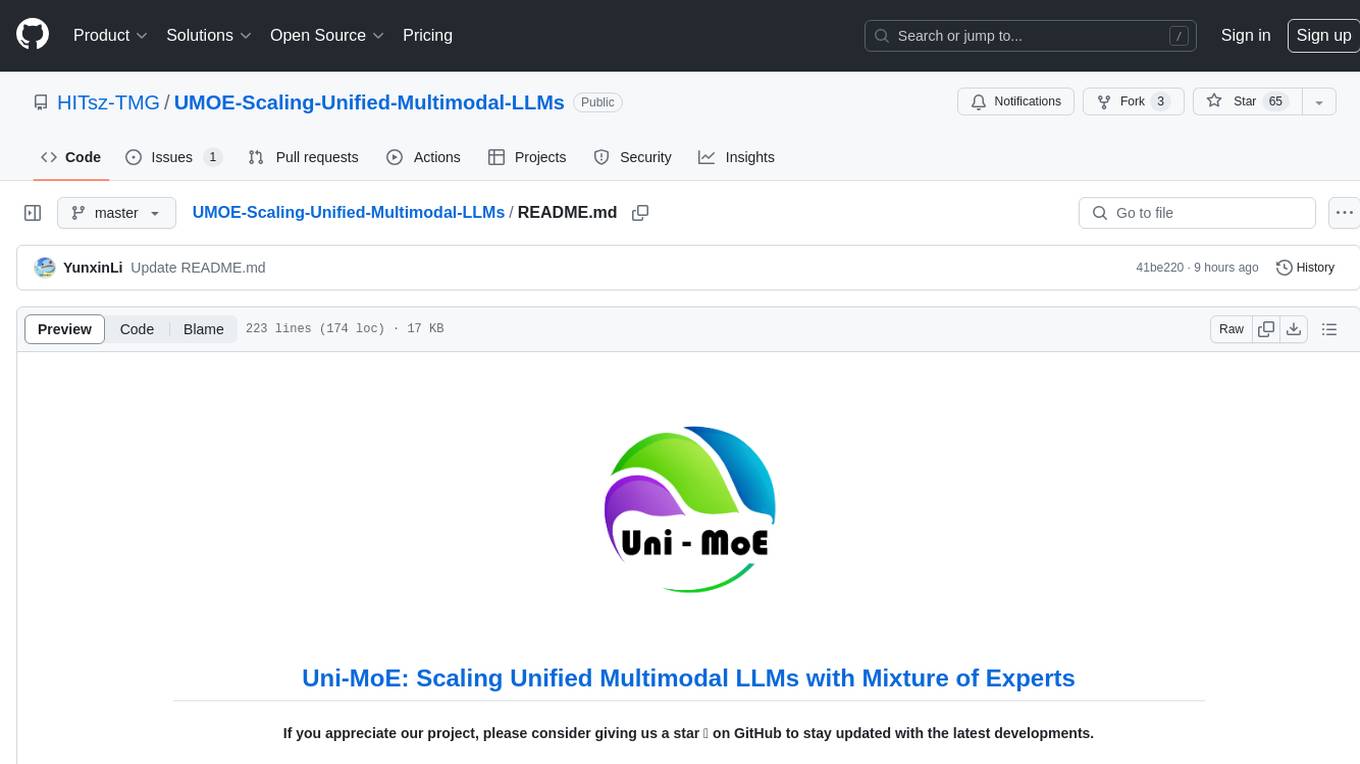
UMOE-Scaling-Unified-Multimodal-LLMs
Uni-MoE is a MoE-based unified multimodal model that can handle diverse modalities including audio, speech, image, text, and video. The project focuses on scaling Unified Multimodal LLMs with a Mixture of Experts framework. It offers enhanced functionality for training across multiple nodes and GPUs, as well as parallel processing at both the expert and modality levels. The model architecture involves three training stages: building connectors for multimodal understanding, developing modality-specific experts, and incorporating multiple trained experts into LLMs using the LoRA technique on mixed multimodal data. The tool provides instructions for installation, weights organization, inference, training, and evaluation on various datasets.
For similar jobs

sweep
Sweep is an AI junior developer that turns bugs and feature requests into code changes. It automatically handles developer experience improvements like adding type hints and improving test coverage.

teams-ai
The Teams AI Library is a software development kit (SDK) that helps developers create bots that can interact with Teams and Microsoft 365 applications. It is built on top of the Bot Framework SDK and simplifies the process of developing bots that interact with Teams' artificial intelligence capabilities. The SDK is available for JavaScript/TypeScript, .NET, and Python.

ai-guide
This guide is dedicated to Large Language Models (LLMs) that you can run on your home computer. It assumes your PC is a lower-end, non-gaming setup.

classifai
Supercharge WordPress Content Workflows and Engagement with Artificial Intelligence. Tap into leading cloud-based services like OpenAI, Microsoft Azure AI, Google Gemini and IBM Watson to augment your WordPress-powered websites. Publish content faster while improving SEO performance and increasing audience engagement. ClassifAI integrates Artificial Intelligence and Machine Learning technologies to lighten your workload and eliminate tedious tasks, giving you more time to create original content that matters.

chatbot-ui
Chatbot UI is an open-source AI chat app that allows users to create and deploy their own AI chatbots. It is easy to use and can be customized to fit any need. Chatbot UI is perfect for businesses, developers, and anyone who wants to create a chatbot.

BricksLLM
BricksLLM is a cloud native AI gateway written in Go. Currently, it provides native support for OpenAI, Anthropic, Azure OpenAI and vLLM. BricksLLM aims to provide enterprise level infrastructure that can power any LLM production use cases. Here are some use cases for BricksLLM: * Set LLM usage limits for users on different pricing tiers * Track LLM usage on a per user and per organization basis * Block or redact requests containing PIIs * Improve LLM reliability with failovers, retries and caching * Distribute API keys with rate limits and cost limits for internal development/production use cases * Distribute API keys with rate limits and cost limits for students

uAgents
uAgents is a Python library developed by Fetch.ai that allows for the creation of autonomous AI agents. These agents can perform various tasks on a schedule or take action on various events. uAgents are easy to create and manage, and they are connected to a fast-growing network of other uAgents. They are also secure, with cryptographically secured messages and wallets.

griptape
Griptape is a modular Python framework for building AI-powered applications that securely connect to your enterprise data and APIs. It offers developers the ability to maintain control and flexibility at every step. Griptape's core components include Structures (Agents, Pipelines, and Workflows), Tasks, Tools, Memory (Conversation Memory, Task Memory, and Meta Memory), Drivers (Prompt and Embedding Drivers, Vector Store Drivers, Image Generation Drivers, Image Query Drivers, SQL Drivers, Web Scraper Drivers, and Conversation Memory Drivers), Engines (Query Engines, Extraction Engines, Summary Engines, Image Generation Engines, and Image Query Engines), and additional components (Rulesets, Loaders, Artifacts, Chunkers, and Tokenizers). Griptape enables developers to create AI-powered applications with ease and efficiency.


